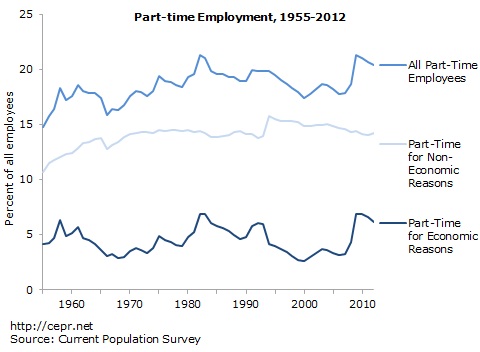November 20, 2012

In 2012, about one-in-five workers is in a part-time job (following the Bureau of Labor Statistics definition of working fewer than 35 hours per week). The rate is higher for women (26.1 percent in October 2012) than for men (13.5 percent), but what is most striking about the chart below is the trend over time in part-time work. Over the last three decades, as economic inequality has been climbing, the overall rate of part-time employment (the top line in the chart) has barely changed.
Before the jump in part-time employment in 2008, which was entirely a function of the big increase in involuntary part-time employment related to the Great Recession, part-time employment was actually on a slow decline. Given that overall part-time employment was becoming less important for almost 30 years (voluntary part-time work was flat, but involuntary part-time work was on the decline), it is hard to argue that part-time work has played an important role in rising inequality.
What is more, as the chart shows, part-time work was rising between the mid-1960s and 1980, a time when economic inequality was basically flat.
The problem facing workers isn’t a rise in part-time work. The problem is the increasing precarity of full-time work.






